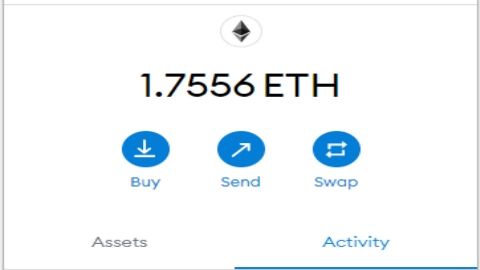The cryptocurrency market has continued to bleed for the second day in a row. Bitcoin has plunged further, hitting a six-month low. It is currently trading at around $35,500, down 6.28% on the day. Ether and other altcoins have also hemorrhaged, erasing some of the gains from recent rallies. The crash has been attributed to a global stock sell-off and an impending ban on cryptocurrencies in Russia.
Here are other top cryptocurrency headlines you may have missed this week:
Singapore’s Top Financial Regulator Goes After Cryptocurrency ATM Operators
Cryptocurrency ATM operators in Singapore were ordered on Monday to halt operations by the guidelines recently published.
The issued “request” prohibited crypto companies from providing services at physical crypto ATMs. Singapore has five crypto machines spread across its malls, two of which were confirmed inactive on Tuesday after the order according to a report by Bloomberg.
This represents the latest efforts by the Monetary Authority of Singapore to regulate the cryptocurrency sector. The MAS argued that providing locals with exposure to digital assets through ATMs promoted impulsive crypto trading and prompted business decisions without considering the risks involved.
Twitter takes a big leap, bringing verifiable NFT profile pictures to your timeline
Jack Dorsey’s Bitcoin-only philosophy has changed following the release of the feature. Thursday, Twitter advertisement who is looking for an NFT profile picture verification feature for Twitter Blue users.
In a move that saw the tech giant become one of the first social media platforms to incorporate NFT into its app, Twitter Blue subscribers on iOS devices will enjoy the ability to connect their crypto wallets to their Twitter profiles and, thus displaying their NFTs.
While several users are already using NFTs on their profiles, Twitter will now add verifiability to indicate authentication and true ownership of digital art. Also, the profile pictures would have a different shape, taking on a sleek hexagonal structure different from the usual circular profile pictures on the platform.
However, Twitter has not made it clear how it intends to deal with right-clicking users who might as well download NFT profile pictures, turn them into digital collectibles, and use them as their own NFT profile pictures.
The social network also stated that the new NFT feature is still under active development and it is unclear if it will be rolled out to the general community on the platform.
As in Defi, Ethereum is losing out to rival ecosystems in NFT, warns JPMorgan
In a recent note to clients, JPMorgan posited that Ethereum is continually losing market share to lesser networks like Solana. Solana has consistently outperformed Ethereum in NFT volume share since August 2021, which is the time when the NFT scene started to see a big boom.
A team of analysts at the investment banking firm explained that Ethereum has been plagued by congestion issues and high gas fees, unsuitable factors for users wanting to mint NFTs. Competing ecosystems like Solana, Wax, and Tezos are attracting migratory users into their circles.
Nikolaos Panigirtzoglou, who led the research team, explained that Ethereum’s market dominance in the space has fallen by 15% in the space of a year. At the beginning of 2021, the domain of the ecosystem was 90%, which is now 80%.
Panigirtzoglou also explained that if this trend seemed ” more sustained” As the year progresses, we could see a greater impact on the valuation of Ethereum as a result of this market change.
This could be a cause for concern, as JPMorgan theorized that Ethereum’s market share in NFT was much more valuable than in Defi. The reason is that NFTs are the ” fastest-growing universe in the crypto ecosystem.”
MicroStrategy Will ‘Keeper’ Its $5 Billion Bitcoin Reserve, Says CEO
MicroStrategy CEO Michael Saylor has said that his company will not be selling any Bitcoin in its wallet, but will be limited solely to buying and storing.
Saylor’s comments come at a time when the mood around the crypto markets is bearish, and digital assets are barely improving. The business executive claimed that even as the BTC market fell as much as 40% below the $40,000 support, he did not panic.
Saylor also maintained that he feels ” great consolation in Bitcoin, given the levels of inflation that fiat money is showing. He argued that by holding Bitcoin, his company had established a fairly good position against an inflationary environment.
Previously predicted at the end of last year that he expected Bitcoin to reach $600k in the future and eventually $6 million. However, his staunch belief in Bitcoin is not paying off at the moment, as MicroStrategy shares have plunged 16% in the past year despite Bitcoin rising 35% in the same period.
Intel plans to release more efficient ASIC miners, listing Ohio-based startup as a first major customer
California-based chipmaker Intel is reportedly planning to launch a power-efficient, ultra-low-voltage ASIC miner at the ISSCC conference scheduled for the end of next month.
Tom’s Hardware, who first published the story, suggested that the next project would be a Bitcoin-specific ASIC to align with the patent for an optimized SHA-256 data path that Intel applied for in the 2018IC. It would also be important since Bitcoin takes advantage of the SHA-256 cryptographic hash algorithm of hashcash.
During an interview late last year, Intel systems and graphics architect Raja Koduri indicated that the company was interested in the project. He said the tech maker was working on optimized hardware to resolve high-cost, high-power constraints on blockchain validation.
The mining chip that Intel plans to release, the ‘Bonanza Mine’, also appeared in a subsequent report, this time from Fox Business.
The news reported that GRIID, an Ohio-based mining startup, had agreed with the chipmaker to become the first recipient of BZM2 ASIC miners. According to an S-4 filing from GRIID, the supply of Bitcoin mining equipment begins this year. In addition, the start-up would have a “significant involvement” in the future pool of Intel miners.

